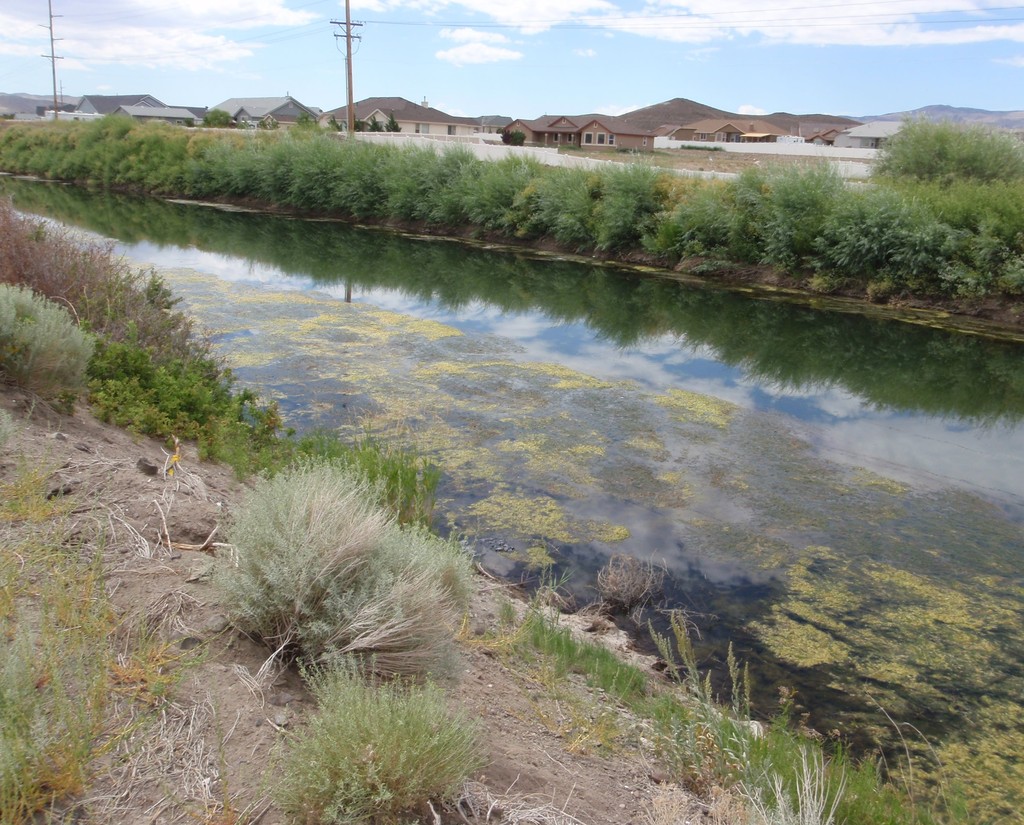
Mechanical Methods of Managing Aquatic Vegetation in Canals
A common method for managing these challenges is to use mechanical systems such as mowing, hand pulling, chaining, excavating, and scraping. These methods of removing vegetation require routine and consistent efforts and often leave behind a significant amount of debris that must also be safely disposed of.
Dredging, a costly and time-consuming method, requires specialized harvesters designed for use in canals below the active waterline. This method utilizes an excavator or heavy equipment to scrape the canal substrate and the rooted vegetation with it. While effective at cleaning vegetation from the canal, this process also removes or disrupts the impermeable clay lining and the silt from the canal during the process which can promote canal seepage and cause sedimentation problems downstream. Chaining is another method that requires less customized machinery in that it uses a heavy chain linked between two vehicles that drive on either side of the canal. The chain is dragged along the profile of the canal, pulling up weeds and disrupting the seedbed as it goes. This can disrupt the canal lining similar to dredging. In addition, while some of the vegetation material caught in the chain can be removed, the vast majority will be left in the canal to travel downstream. This necessitates additional cleaning at trashracks, turnouts, check stations and other in-canal obstructions, and can also create new and/or larger infestations.
All mechanical methods are also temporary in that they need to be completed numerous times. Aquatic weed control is laborious in this manner, can be disruptive to the environment, requires repeated efforts, and often specialized equipment.
Chemical Methods for Managing Aquatic Vegetation in Canals
A number of chemical methods are available for aquatic vegetation management. Chemical methods can be very effective in certain situations, and while it is typically less labor-intensive than mechanical control, costs for chemical control can also be significant depending on the chemical used, number of applications necessary, and permitting requirements. Many herbicides labeled for aquatic application require long exposure times and/or can be subject to a holding period where treated water cannot be used for irrigation. Only a few herbicides are currently available that are practical for use in flowing irrigation water.
Other drawbacks of chemical control include toxicity to non-target species, which can be especially problematic for canals that discharge to fish-bearing waters. There also may be limitations depending on seasonality, flow rate, distance, and the acute toxicity of the formulated product. For example, Vancouver Lake worked to eliminate Eurasian watermilfoil using a formulation of Florpyrauxifen, but this product is not labeled for use in flowing waters or even non-flowing irrigation canals.
Controlling Canal Vegetation Is Critical
Aquatic vegetation that grows in canals throughout the country can obstruct flows and impact overall water quality. Maintaining vegetation in canals is a process that must be conducted frequently and over long distances, it is a costly and intensive maintenance activity that is vital to irrigation in the western U.S..
Current methods of managing canal vegetation leave a significant amount to be desired. Although some solutions are successful in certain situations, the available management tools are relatively limited for irrigation canals.
Learn more about the Veg Out Challenge and how you can play a role.
The Veg Out Challenge aims to inspire change. Be a part of it. Contribute your ideas and solutions to help change the way irrigation districts can manage aquatic vegetation in a profoundly effective and safe method.








